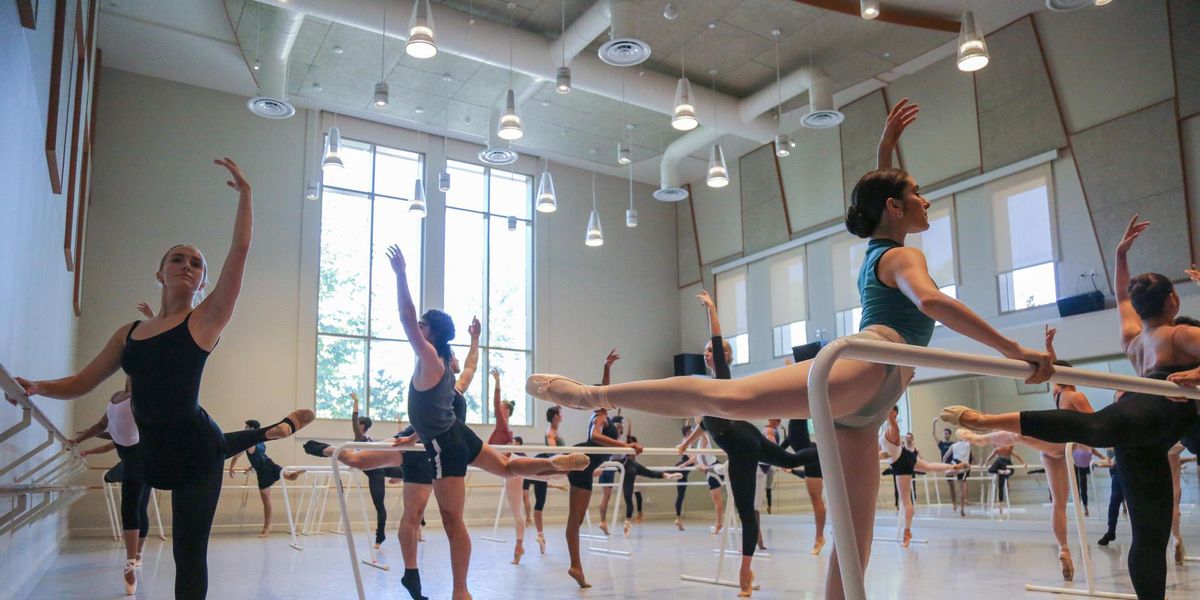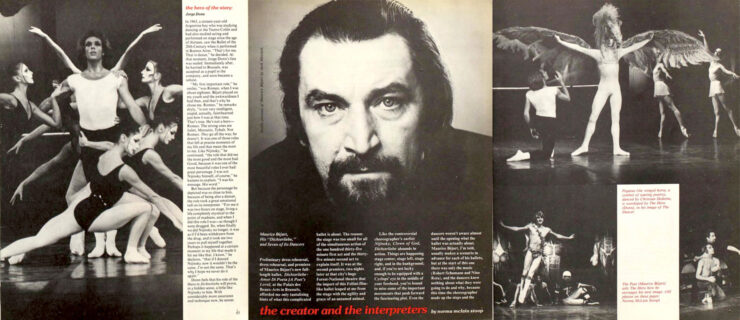How to Use Your Time in College to Cultivate Your Artistry
Dancers spend most of their training years perfecting the mechanics of the art form—rolling through the feet when they come down from every relevé and tracking the knees over their toes in every plié. So when dancers progress in college dance programs and many corrections shift from technical ability to more individual and artistic guidance, some struggle. Developing artistry can feel like a nebulous concept because it looks and feels different for each dancer. “Artistry is the lived experience that you bring to the movement,” says Garfield Lemonius, chair of dance at Point Park University. With the right approach, students can capitalize on the supportive structure of being in a university program to dive into who they are as artists—and learn to apply it to their movement.
Artistic Roadblocks
Overcome these three common hurdles for students:
1. Being caught up in technique. It can be easy to get bogged down by the precision required of dancers, but this can often translate to stiff, robotic movements. Whether you’re taking your weekly modern class or performing in your senior showcase, push yourself to think about what’s inspiring and informing each movement. Shift your focus from striving for perfection to striving for individuality.
2. Forcing facial expressions. “Gone are the days when in order to show trauma or hurt, you wrinkle your forehead,” Lemonius says. Avoid the temptation to express emotion solely through your face. Instead, think about how that emotion feels in every part of your body—from your shoulders to your toes—and how you can convey that to an audience.
3. Constantly comparing. Artistry is about personal experiences shaping your movement, and since everyone’s lives are different, artistry will look different from one dancer to another. Rather than trying to replicate what you see others doing, turn your focus inward. Watch your favorite dancers for inspiration,
Find Your Inner Artist
College offers many opportunities to develop what makes you unique onstage.
Take classes outside your major: Enroll in academic courses unrelated to dance that pique your interest, Lemonius suggests. Whether it’s business, interdisciplinary arts, history or Spanish, outside classes can help dancers become critical thinkers and develop a deeper understanding of the world around them.
Invest in improv: If you feel like you’re just going through the motions, dig deep into improvisation classes. This practice prompts dancers to move based on how they feel and to react to stimuli, which can translate to more individual interpretations of choreographed repertoire.
Consume all types of art: Of course, dancers should attend a diverse range of dance performances, but it is also essential to experience other forms of cultural and artistic expression, says Jodie Gates, founding director of the USC Glorya Kaufman School of Dance. Observe architecture, peruse museums, attend stand-up comedy shows—and consider how various approaches affect your emotional reaction. Study how actors embody their characters. Read novels to step inside of life experiences different from your own.
Spend time in nature: “Some of the most magical and artistic phenomenon occur all around us every day,” Gates says. “Watch the waves roll in. What does that sound like?” Nature can inspire your movement, and spark choreographic ideas.
Study abroad: Immersing yourself in another culture is an excellent way to broaden your worldview. Even if you can’t swing a study abroad semester, join a language club or participate in multicultural events on campus.
Ask for feedback: Talk to faculty members and peers about how they think of you as a dancer. Experiment with embracing those qualities, and defying them.
Am I Improving?
Since artistry is subjective, it can be difficult to gauge your progress. Mentorship is vital, and Gates also suggests that, if you’re comfortable with it, you can record yourself in rehearsal and during your creative process, so you can review it later. Over time, you can see how nuances in your movement, musicality and expressions change (or don’t).




